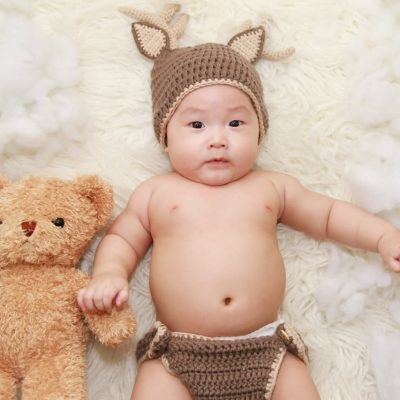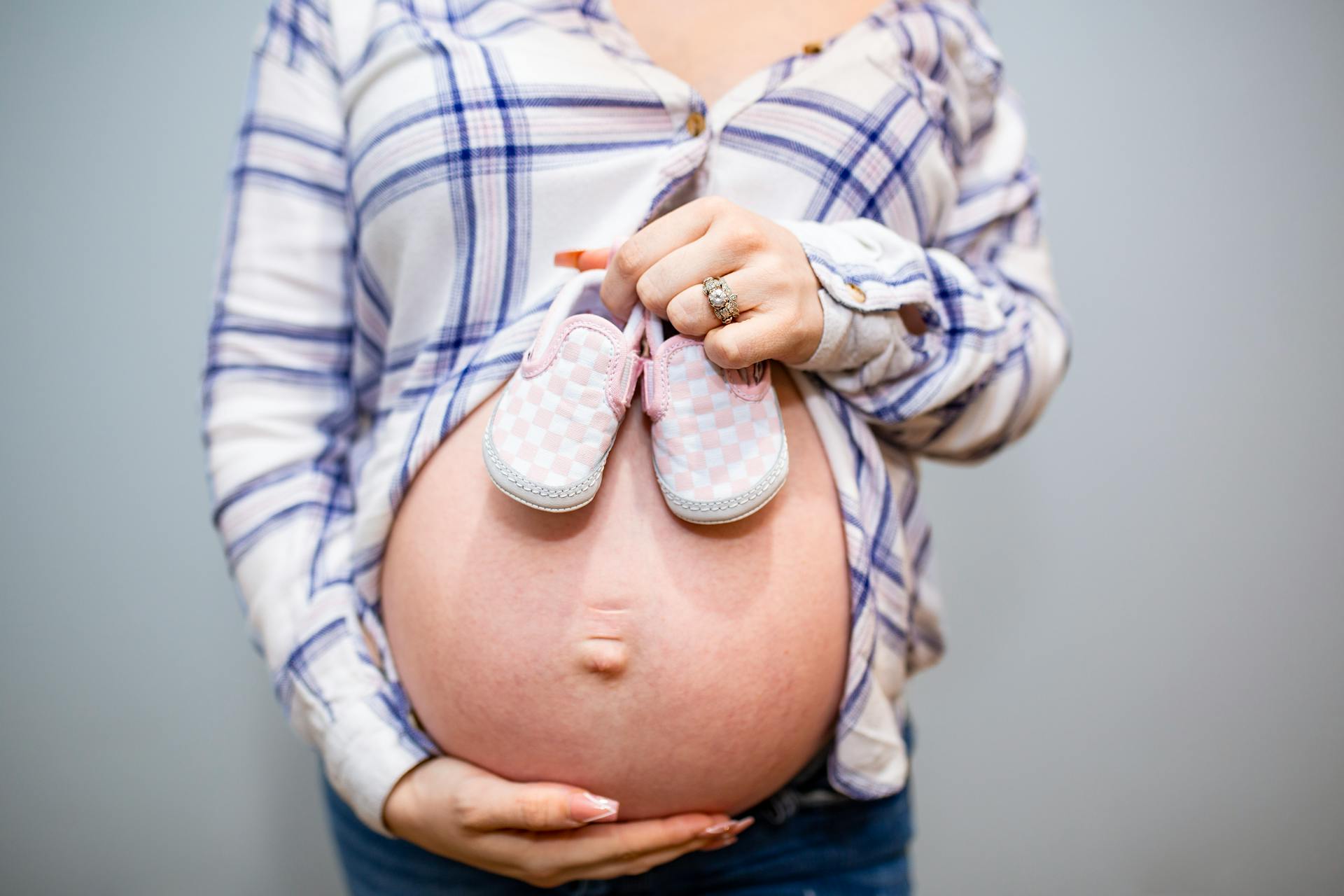As a new parent, you may have noticed your newborn suddenly jerking or flailing their arms and legs as if startled, often accompanied by a quick intake of breath or a small cry. This involuntary movement is known as the Moro reflex, or startle reflex, and it’s completely normal. But why do newborns startle in this way, and what does it mean?
In this article, we’ll explore the causes behind the startle reflex in newborns, why it’s an important part of their development, and what you can do to soothe your baby when they startle easily.
What Is the Moro Reflex?
The Moro reflex, commonly referred to as the startle reflex, is one of several automatic responses or reflexes that newborns are born with. These reflexes help babies adjust to life outside the womb and serve as important indicators of neurological development.
When the Moro reflex is triggered, a baby typically reacts by:
- Throwing their arms and legs out suddenly.
- Arching their back.
- Then bringing their arms back toward their body, often making a fist.
- Sometimes, a brief cry or whimper follows the movement.
This startling action may seem alarming to new parents, especially if it happens frequently or suddenly, but it’s a normal, healthy reflex that usually disappears by the time the baby is 4 to 6 months old.
Why Do Newborns Startle?
The Moro reflex is a natural, protective response to sudden changes in a baby’s environment. It’s believed to have evolved as a survival instinct, helping babies react to the sensation of falling or losing balance.
Here are the common triggers that may cause your baby to startle:
1. Sudden Movements
A sudden movement or change in position, such as laying your baby down quickly or picking them up abruptly, can trigger the startle reflex. The sensation of moving from a secure, held position to lying down may mimic the feeling of falling, prompting the Moro response.
2. Loud Noises
Loud or unexpected sounds—like a dog barking, a door slamming, or even a sudden cough—can startle your newborn. Babies are sensitive to their surroundings, and because their hearing is still developing, loud noises can seem more intense to them than they do to adults.
3. Bright Lights
Sudden changes in light, such as turning on a light in a dark room or exposing your baby to bright sunlight, can also trigger the Moro reflex. Newborns are sensitive to light because their eyes are still adjusting to the world outside the womb.
4. Temperature Changes
A rapid change in temperature, such as removing a blanket or changing clothes, can make your baby feel insecure and prompt the startle reflex. The sudden sensation of cool air on their skin may cause them to flail their arms as if reacting to discomfort.
5. Feeling of Falling or Insecurity
Even small movements, such as a shift in their sleeping position or the feeling of being unsupported, can cause a baby to startle. The Moro reflex is a protective response that mimics the action of grabbing on for safety.
Tip: While these triggers can be alarming, remember that the startle reflex is a completely normal and expected part of your baby’s early development.
Why Is the Moro Reflex Important?
The Moro reflex is more than just a cute quirk of newborn behavior it serves an important role in your baby’s development. This reflex:
- Protects your baby: The Moro reflex is thought to have evolved to help protect newborns. In earlier human history, when babies were carried everywhere, this reflex could have helped a baby cling to its mother if they sensed a sudden movement or fall.
- Indicates healthy nervous system development: The presence of the Moro reflex shows that your baby’s central nervous system is functioning properly. It’s one of the reflexes doctors check for during newborn exams.
- Aids motor development: The movement of stretching out and then bringing the arms back in helps newborns practice the coordination of their limbs and develop muscle control.
As your baby’s nervous system matures, the Moro reflex gradually fades. By the time your baby is about 4 to 6 months old, they will have more control over their movements and be less prone to startling.
When Should I Be Concerned About My Baby’s Startle Reflex?
While the Moro reflex is a normal part of development, there are a few instances when it’s important to consult with your pediatrician:
1. Lack of Reflex
If your newborn doesn’t seem to startle at all, even when exposed to loud sounds or sudden movements, it could indicate an issue with their nervous system or development. A weak or absent Moro reflex should be assessed by a doctor.
2. Persistent Startling Beyond 6 Months
Most babies outgrow the Moro reflex by the time they reach 4 to 6 months of age. If your baby continues to startle frequently after this period, it’s a good idea to bring it up with your pediatrician to rule out any developmental concerns.
3. Asymmetrical Reflex
If one arm or leg responds differently from the other during a startle, it could be a sign of a condition affecting one side of your baby’s body, such as a fractured clavicle (collarbone) or a neurological issue. Always check with your doctor if you notice any asymmetry in your baby’s startle reflex.
How to Help Soothe a Baby Who Startles Easily
While the Moro reflex is unavoidable in newborns, there are some strategies to help soothe your baby and minimize startling episodes:
1. Swaddle Your Baby
Swaddling can help prevent your baby from startling as frequently by creating a snug, womb-like environment. Wrapping your baby in a soft, breathable blanket can make them feel secure and reduce the chances of flailing their arms. Just make sure the swaddle is not too tight and that you stop swaddling once your baby starts rolling over.
2. Handle Transitions Gently
When putting your baby down in their crib or picking them up, try to move slowly and gently to avoid triggering the Moro reflex. Supporting their head and neck while moving them can help reduce the feeling of instability.
3. Create a Calm Environment
Newborns are sensitive to loud noises and bright lights, so creating a calm, quiet environment can help reduce the frequency of startle responses. Use soft lighting, speak in gentle tones, and avoid sudden loud noises around your baby.
4. Use White Noise
White noise machines or apps can help drown out sudden sounds that might startle your baby. White noise mimics the sounds of the womb and creates a soothing background that can help your baby sleep more peacefully.
5. Stay Close for Comfort
If your baby startles while sleeping or resting, offering them a comforting presence can help them calm down quickly. Gently place your hand on their chest or cuddle them to provide reassurance.
Conclusion
The Moro reflex is a perfectly normal, natural response in newborns, signaling that their nervous system is functioning properly. While it may seem startling to you, it’s an essential part of your baby’s development, and most babies outgrow this reflex by 4 to 6 months of age.
By understanding why your baby startles and how to create a calming environment, you can help your newborn feel more secure and reduce the chances of frequent startling. If you ever have concerns about your baby’s startle reflex, don’t hesitate to consult your pediatrician for guidance and peace of mind.















